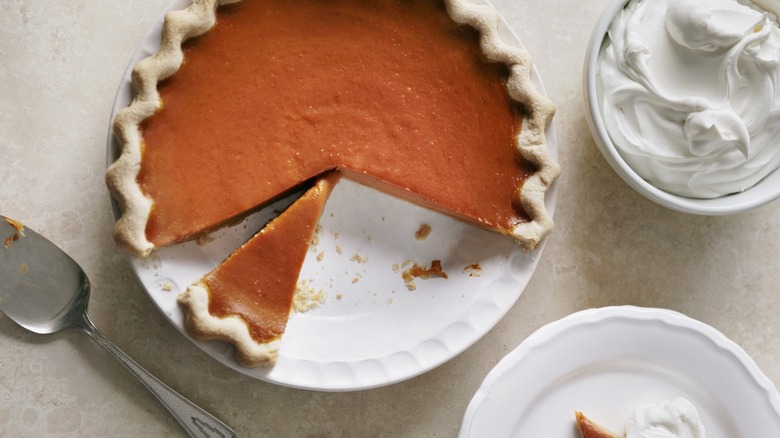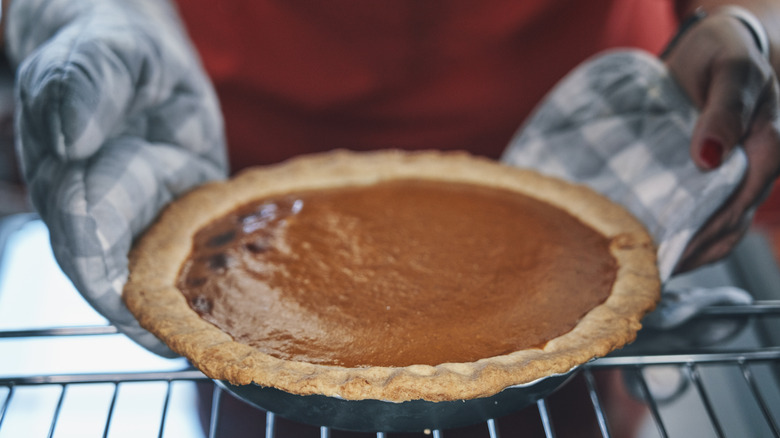The Simple Test To Tell Your Pumpkin Pie Is Done Baking
We may receive a commission on purchases made from links.
Pumpkin pie doesn't usually grace the nightly dinner table, but its time to shine is during the holidays. This single-crust, custard-based pie is usually symbolic of the fall season and harvest time, and it often makes its debut at Thanksgiving. With pumpkin spice ingredients like cinnamon, allspice, ground ginger, nutmeg, and clove, pumpkin pie has a rich essence that makes it seem like a difficult dish to prepare, when in fact it's one of the easiest pies to put together. The caveat involved when baking pumpkin pie is determining its doneness. As with many custard-based pies, it can be difficult to gauge firmness, and it's easy to overcook or undercook. While there are a few ways to determine whether a pumpkin pie is ready, the simplest test is to give it a nudge and check its jiggle.
Sometimes using your senses is the best way to check cooking time, and although you could employ the knife or toothpick test, pumpkin custard can be tricky. Inserting a knife may not always result in a clean withdrawal, even though the pie may be ready to come out of the oven. Additionally, custard pies will continue to cook when removed from the oven to cool, so you often want a soft center. And with no top crust on a pumpkin pie, you may not want to dive in and ruin the aesthetics. Once you learn how to figure out the jiggle, you'll have less fear of messing up cooking times.
The perfect jiggle and another method
A classic pumpkin pie recipe often calls for varying cooking temperatures, in part because you'll want a lower temperature to evenly bake the filling after initially getting the crust started. You may start your pie out at 425 degrees Fahrenheit and after about 15 minutes, lower the temperature to 350 to 375 degrees Fahrenheit and cook for another 45 minutes with a foil tent. When it's time to test for doneness, give your pie plate a little prod. What you're looking for is some slight movement in the center of the pie that amounts to a firm jiggle. If you see the entire pie moving, it needs more baking time. Check the pie's jiggle factor every 5 to 10 minutes. When the center is jiggly but firm (not liquidy) and the outer edge of the pie is completely firm, it should be good to go.
If you're still on the fence after the jiggle test, there is another way to determine if your pumpkin pie is cooked properly. You already know you don't want to poke and prod your creation, but you can insert an instant-read thermometer in the center of the pie with minimal damage. Here, you'll want to see a reading of 180 degrees Fahrenheit. To disguise any blemish in the pie, consider adorning it with whipped cream, a sprig of fresh rosemary, or the ultimate fresh fall ingredient — some seasonal cranberries.

